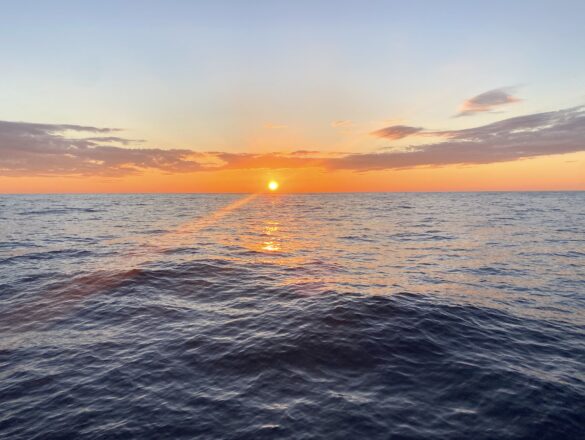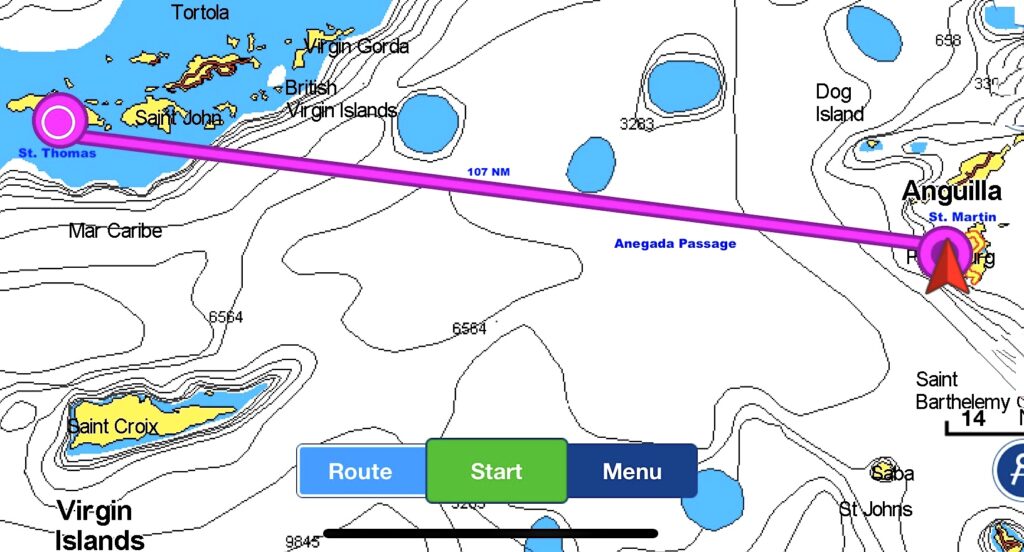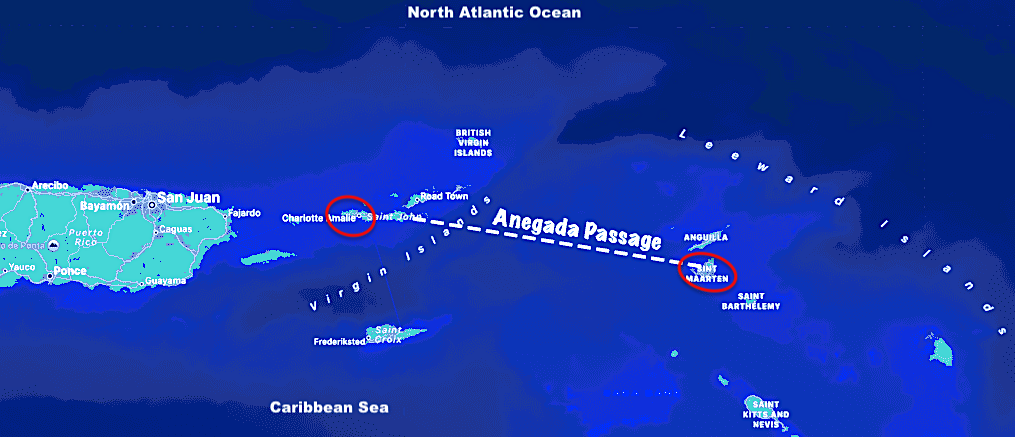We left St. Thomas in the US Virgin Islands at 3pm for an 18-hour passage straight to St. Martin. This would have us arriving around 9am the following day. When Kory and I do an overnight passage, we try to plan our arrival time in a new location to be after sunrise. This is because we aren’t familiar with the area and can’t see the channels, shorelines, depths, un-lit boats, or other objects in the dark. Plus, it’s just not easy to anchor or pick up a mooring ball without some daylight.
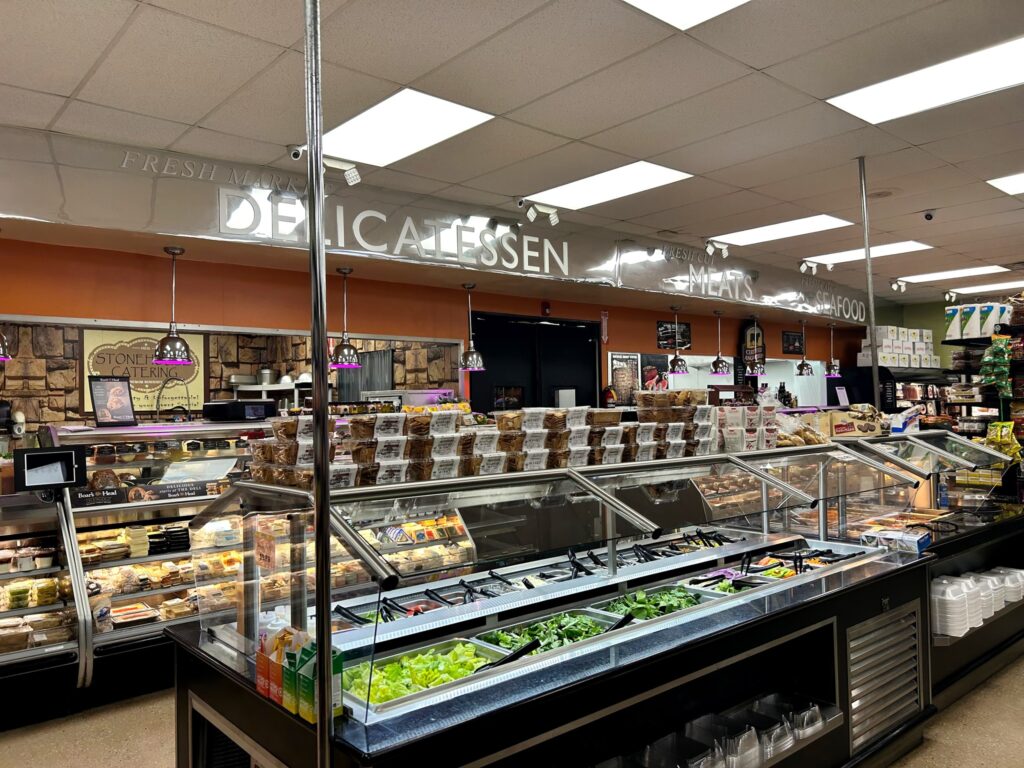
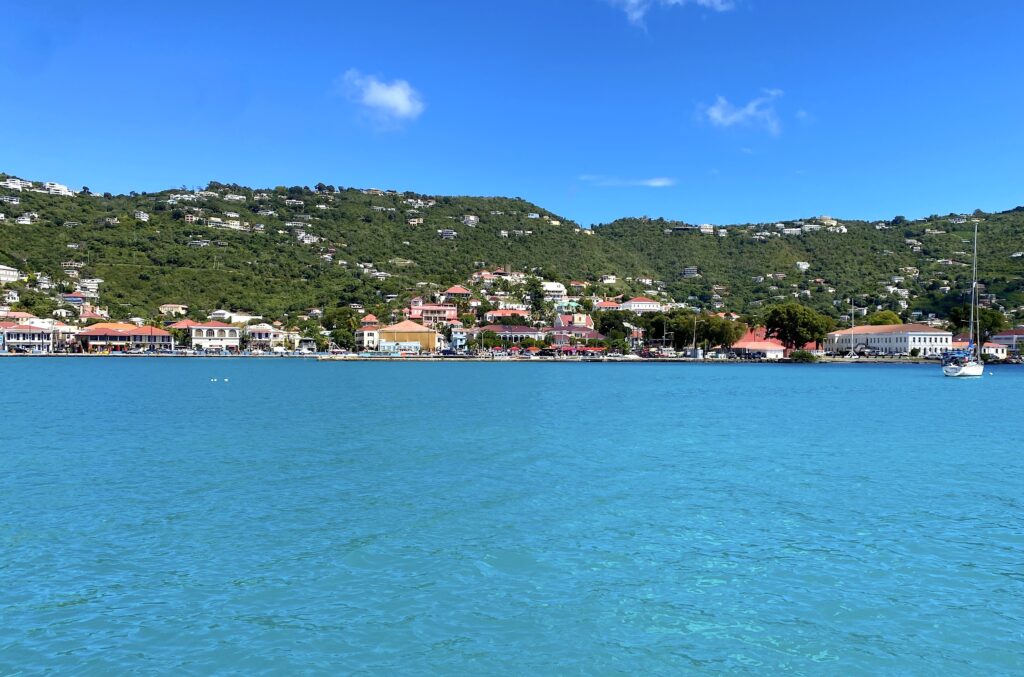
We chose to go straight to St. Martin from the USVI’s because we had a great weather window and we wanted to take advantage of the calmer seas and favorable wind direction. Normally when heading east from the USVI’s boats have to head directly into the trade winds. The trade winds are winds that reliably blow east to west just north and south of the equator. This is great for ships heading west as the winds push them from behind, but it’s not great for vessels heading east. In fact, it makes for a very uncomfortable passage with wind and waves pounding into the bow of the boat.
Most cruisers we’ve met go to Virgin Gorda, the easternmost island of the British Virgin Islands, then jump off from there for a 12-13 hour passage to St. Martin. Since we weren’t going to be visiting the BVI’s on this leg of our journey, we decided to take the longer passage to St. Martin directly from St. Thomas.
The good thing about our weather window is that the seas were going to be a maximum of 3-feet with winds coming from a rare south/southwest direction, at a 120-180 degree angle hitting the starboard side and stern of our boat. This means we wouldn’t be beating directly into the trade winds and the ride would be so much more comfortable than usual for this kind of eastward passage. The bad news is that we would have such light winds that we would have to motor much of the trip. Thankfully, we were able to sail for the first four hours, but the winds died down around sunset and clocked behind us, so sailing was no longer an option.
For the rest of our trip, the 5-6 knot winds on our starboard aft meant that we had to run our Yanmar engines. We usually run one engine at a time at about 2300 RPM’s which gives us an average speed of 6.5 knots. We switch engines every few hours; or, when doing an overnight passage, Kory will run the starboard engine during the day and the port engine at night to keep the starboard hull quieter while we’re sleeping. You might be wondering why we don’t run both engines so we can go faster. Well, we have found that running two engine only gives us a 1.6x speed advantage, and we end up burning twice the amount of fuel, so it’s just not worth it.
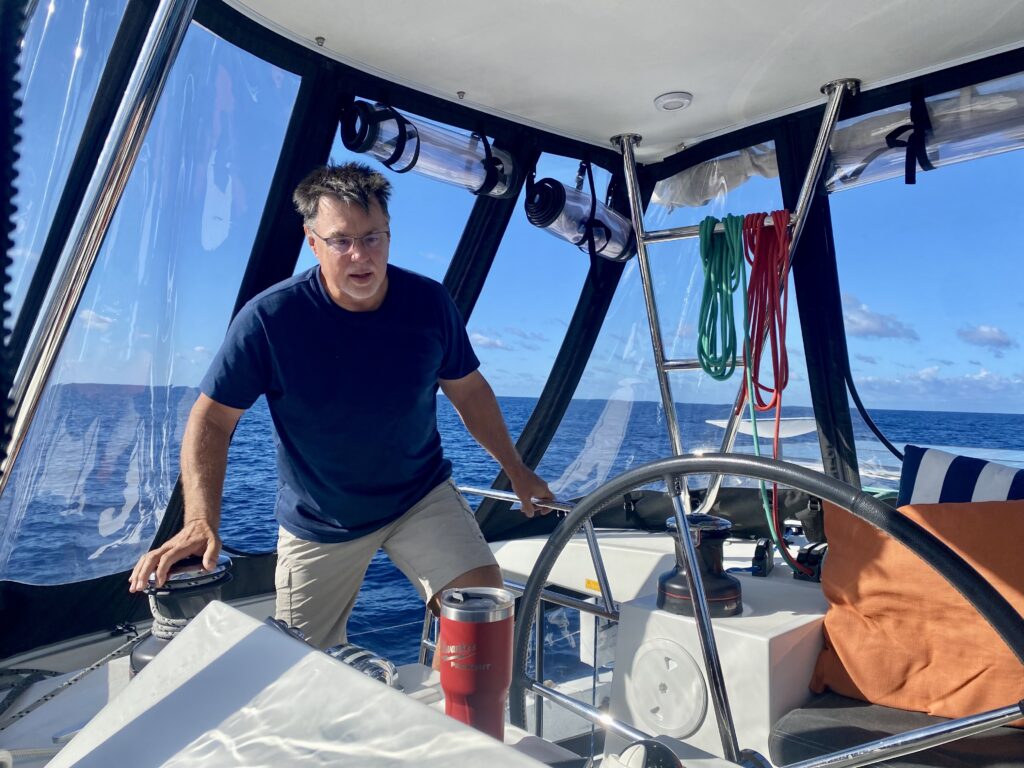
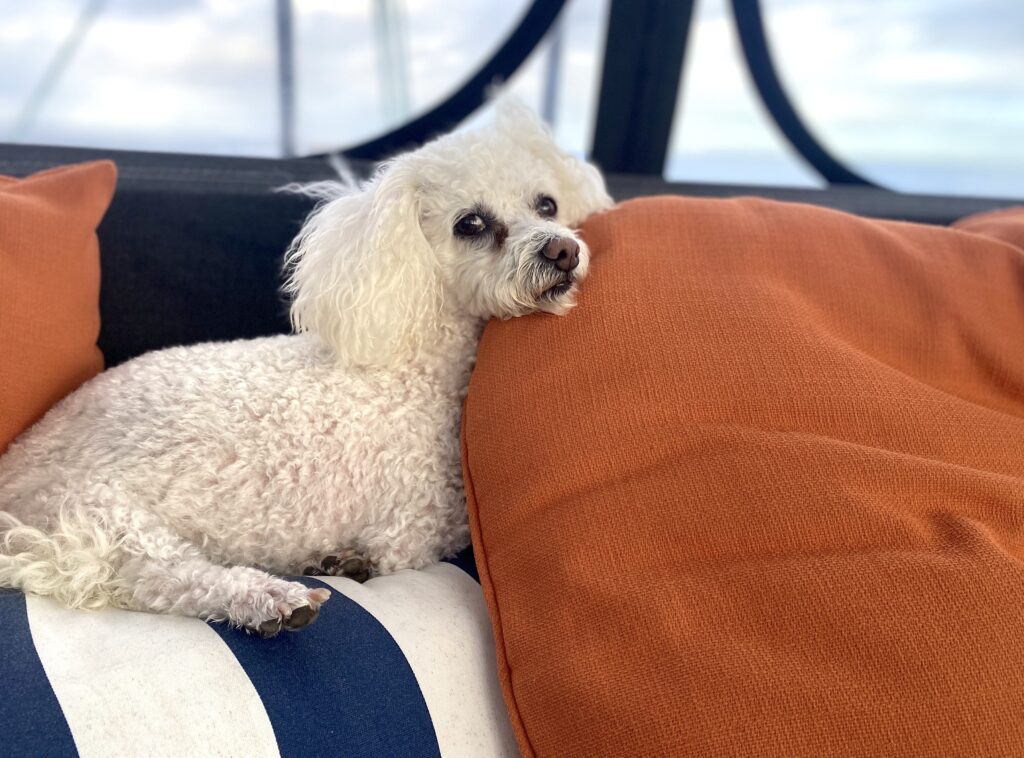
preparing for a long night’s sleep on the passage
The nice part about leaving from St. Thomas and going directly to St. Martin is that there are no islands to get in our way in the open Caribbean Sea. The only part about our voyage that bought any sense of caution was the Anegada Passage. It has been known as the “O-My-Gad-A” passage, and we wanted to understand why before we entered it. We learned that the Anegada Passage is a straight in the Caribbean Sea that has depths reaching more than 6,000 feet. When strong currents from the Atlantic feed into this portion of the Caribbean, it can cause confused seas and big waves slamming against hulls from several different directions.
Thankfully, the night we chose to go through the Anegada Passage was predicted to have fairly calm seas and light winds, so we weren’t concerned. It turned out to be just as predicted. The swells were around 3-4 feet through this area, but there were no breaking waves, and there was no bridge slap on the side of our hulls. The swells were also far apart, so we were just surfing through the area. Our friends who sailed from Virgin Gorda to St. Martin, also passing through the necessary Anegada Passage, went on a day with 6-7 foot seas and wind gusts up to 20-knots, so they experienced a lot of rolling and slamming waves, but nothing that would cause them to be concerned. It was more uncomfortable for them than anything.
We also learned another important fact about the Anegada Passage. It turns out that a lot of cargo ships and tankers go though this straight at night as they head towards the Panama Canal. Thus, ships going east need to keep a close lookout for them, especially at night. On our passage, we hardly saw any boats, and the ones we did see were off in the distance and no cause for alarm. Our trip through the Anegada Passage turned out to be uneventful. We were glad we did our research and were given a calm night to sail through it.
Overall, we had a great 107-mile journey to St. Martin. Kory and I took turns sleeping during the passage. Since it was only going to be one overnighter, we each took five-hour shifts and got a bit more extended sleep than normal. I slept from 7pm to midnight, and Kory from midnight to 5am. We were both awake for the last few hours of our trip and even got in earlier than expected.
We anchored in Marigot Bay on the French side of the island and our friends on Bistari waved to us as we pulled up next to them. It was a bit windy when we arrived and the water was choppy, so it took two tries to set our anchor. We turned off the engines, enjoyed the peace and quiet, and thanked the Lord for the safety He provided. Kory and I were still tired and feeling kind of groggy, so we decided to take a nap for a couple of hours. It was just what we needed.
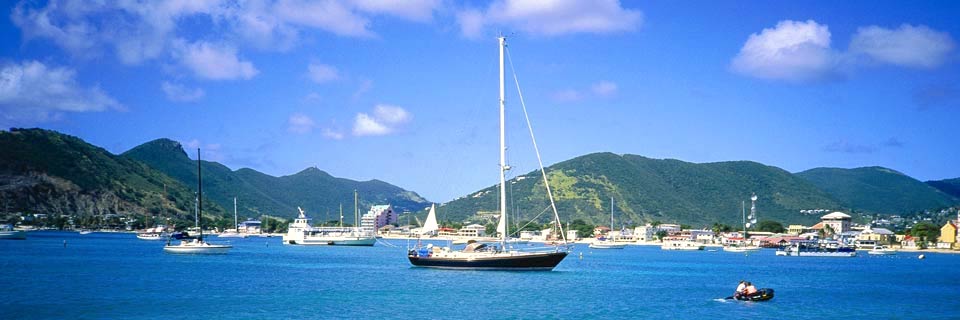
After our naps, we took a refreshing shower, then headed into the town of Marigot to check in with Customs. As we rode into the lagoon, our friends Craig and Bobbi on Mana Kai met us in their dinghy to lead the way to the custom’s office. On the French side of the island you can check in at Island Water World (like West Marine), where they make the process super easy. We brought our passports and boat registration, sat at a computer, filled out a one-page form, then clicked to submit it. It’s was so simple. The only tricky part is that most of the document instructions were in French, but there was a cheat sheet in English on the wall so it made for a quick translation.
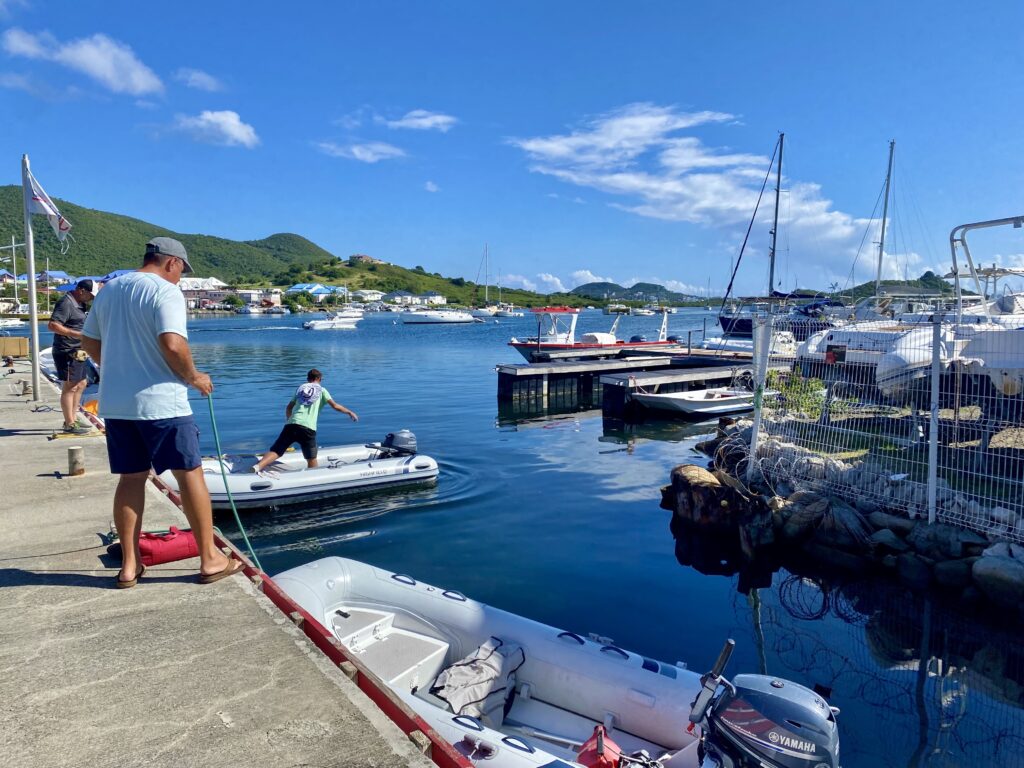
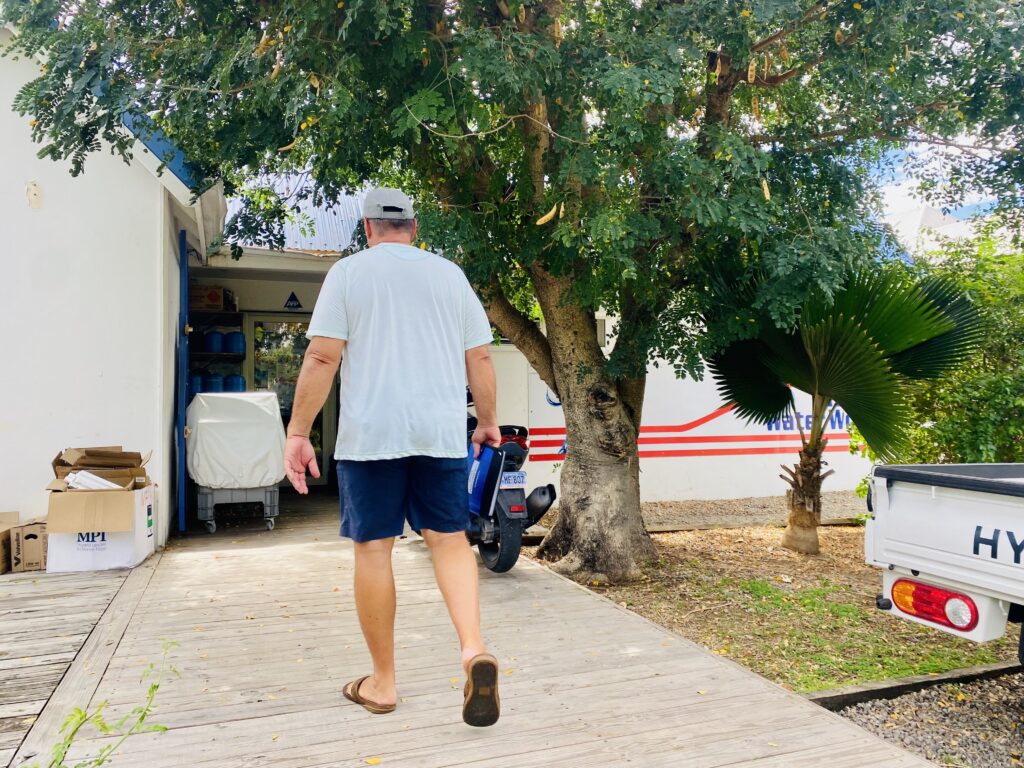
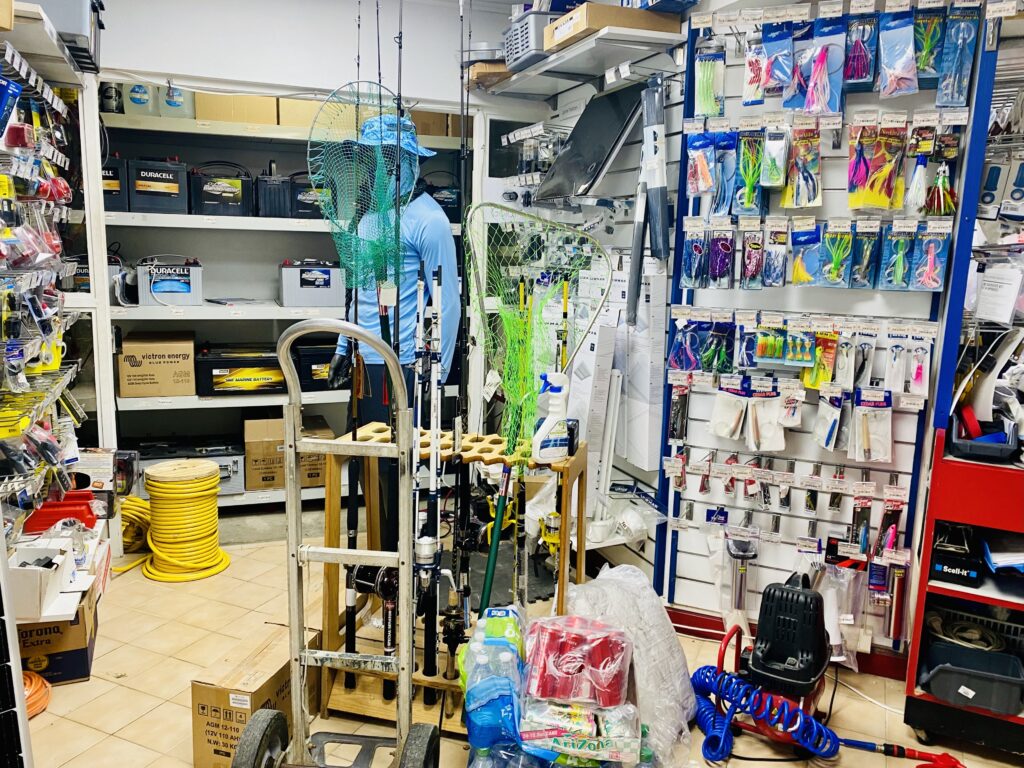
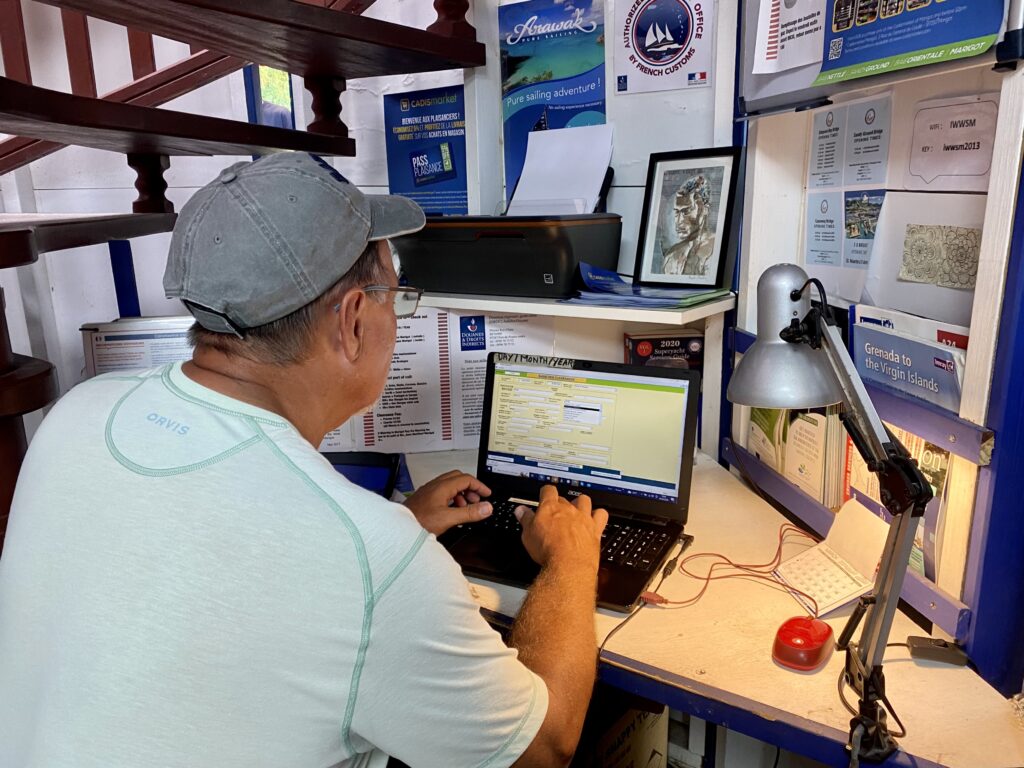
An employee at Island Water World checked our passports, printed out our approved “Maritime Navigation Control Document” which is essentially a visa, and we were cleared to be on the island for 90 days. Time for the explorations to begin!
